I have a simple question that I assume does not have a simple solution. I need to have a multi-column ComboBox for some grid columns in my WPF DataGrid. Is there a known best-practice to accomplish this? From what I have gathered this will require subclassing the DataGridComboBoxColumn to support a custom ComboBox.
I have found some examples of this but not supporting EF entities (I'm using Code First EF).
Any advice is greatly appreciated. Thanks
NOTE: This is all done dynamically with C#. I'm not using XAML to define columns.
Update: What I mean by multicolumn is simply that when you drop the ComboBox down I need to show two values for "Display", even though behind the scenes of course I'm still just storing an ID.
See here:.
 http://www.telerik.com/ClientsFiles/188010_multicolumn-dropdown.JPG
http://www.telerik.com/ClientsFiles/188010_multicolumn-dropdown.JPG
With the exception that I need to do this as a DataGridColumn that can be dynamically created and added to a grid, rather than just the simple combo shown in the image.
Update I finally managed to find an article on CodeProject where the author has developed a control with my -exact- requirements. It is located here. Now the only problem I am trying to solve is how to allow the control to work when using Entity Framework (specifically, code first). Getting closer!